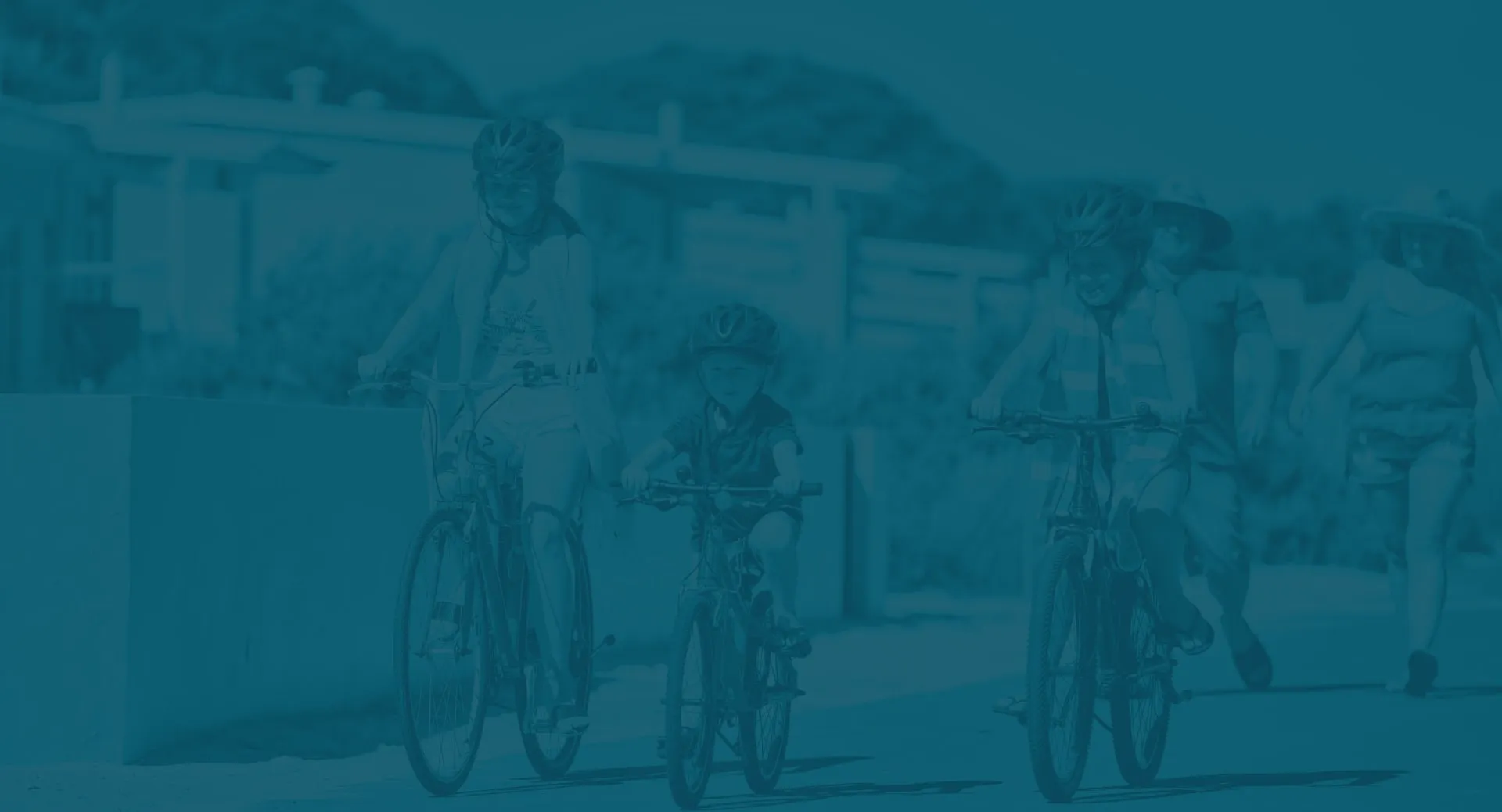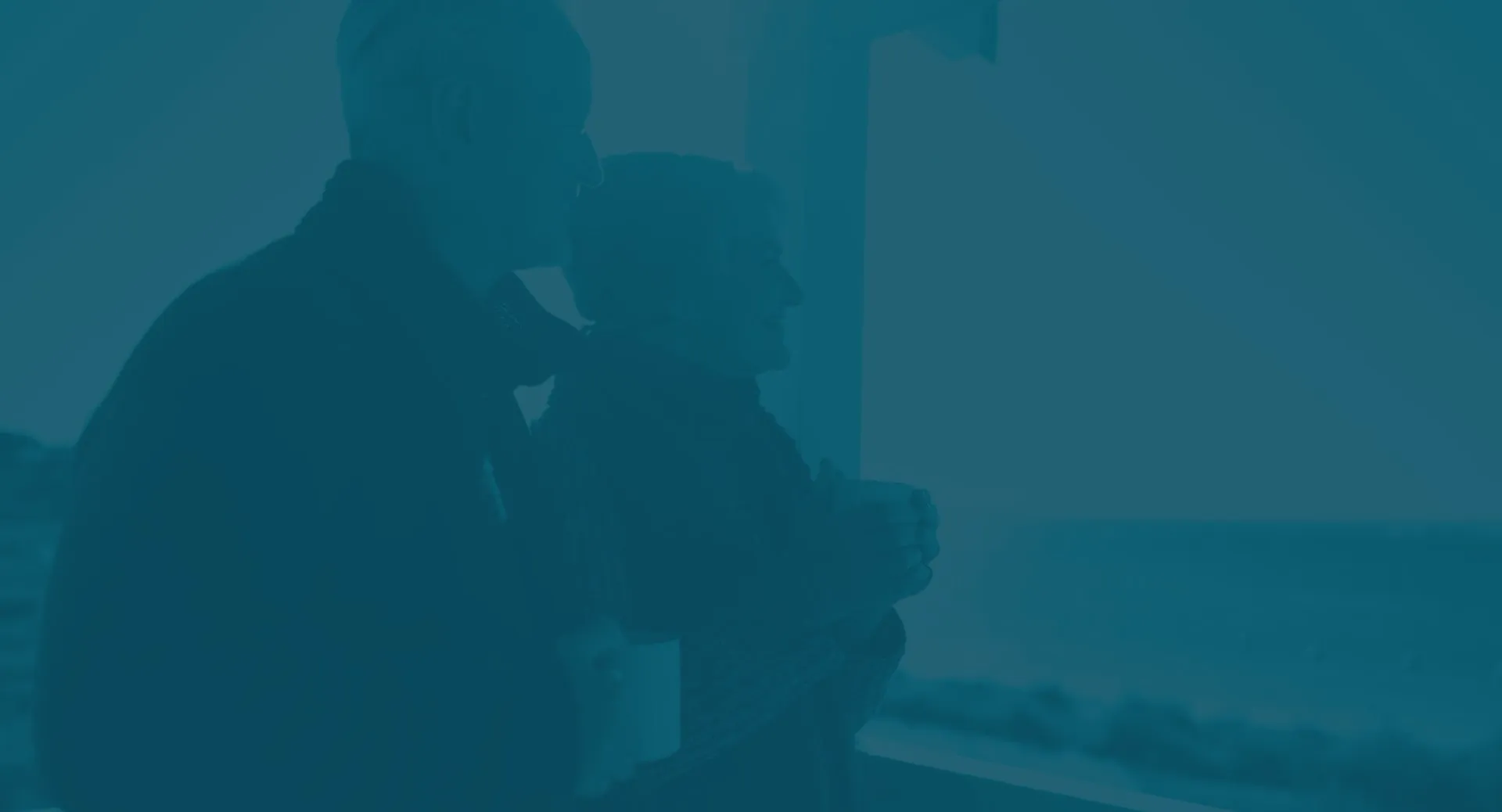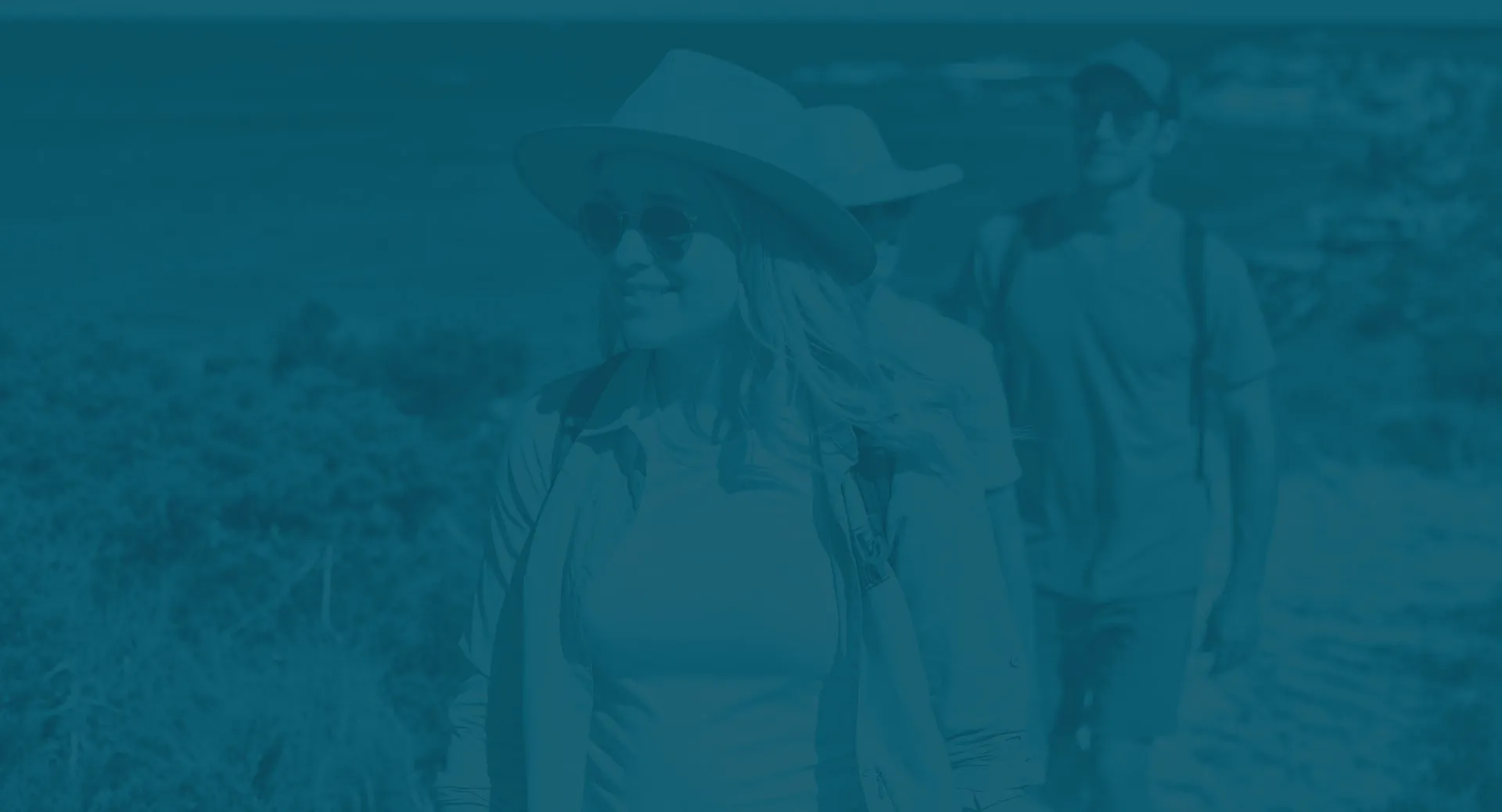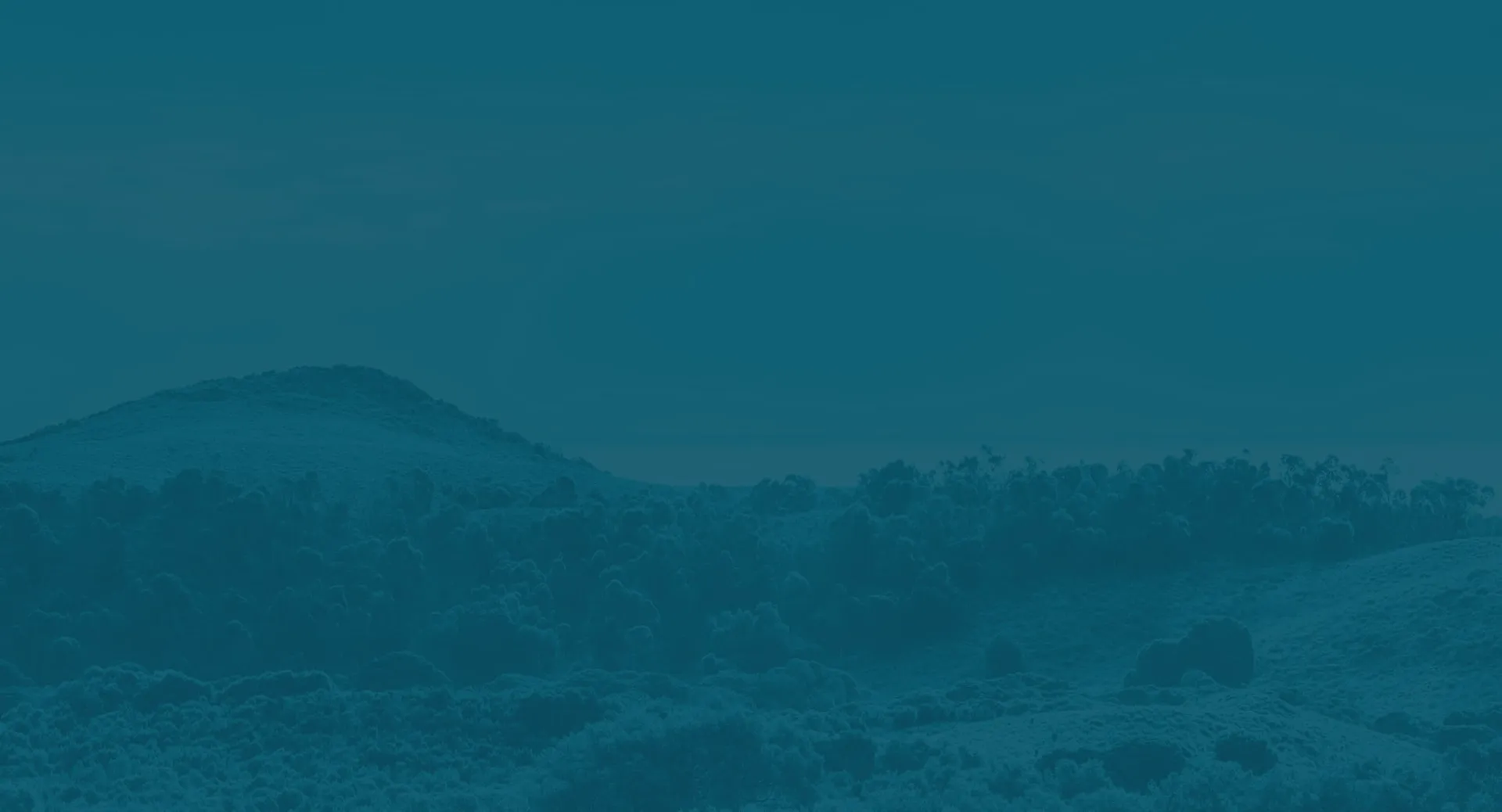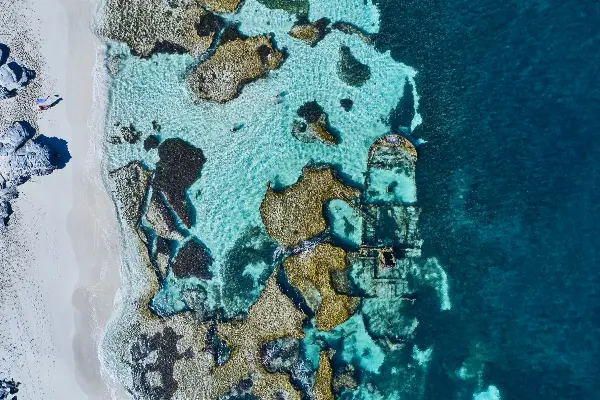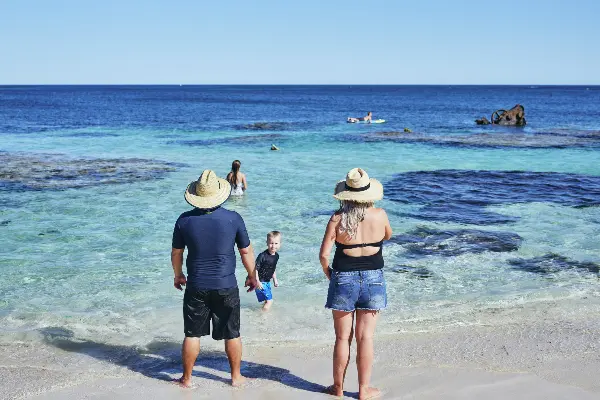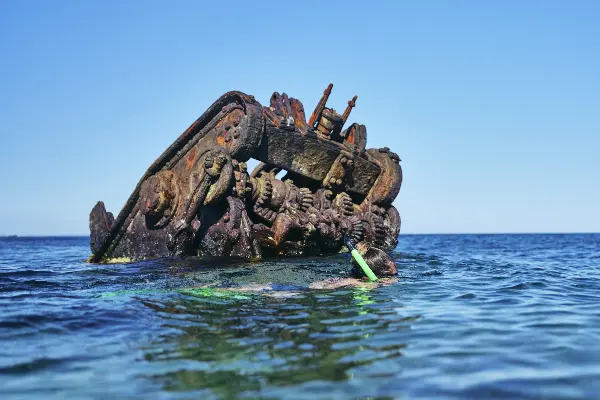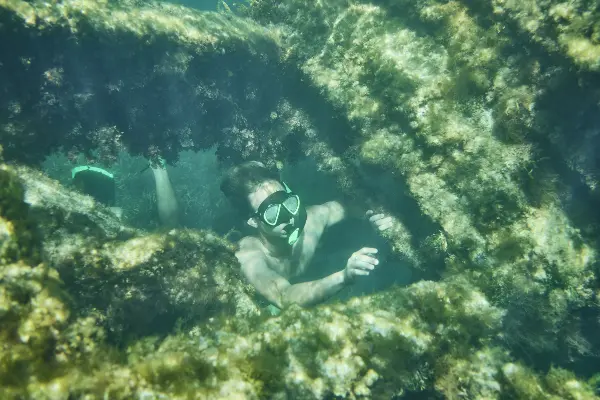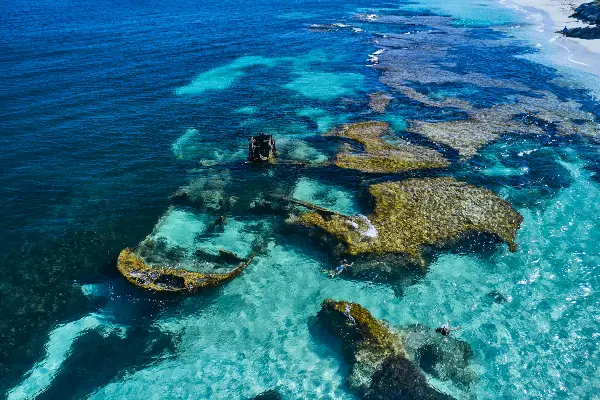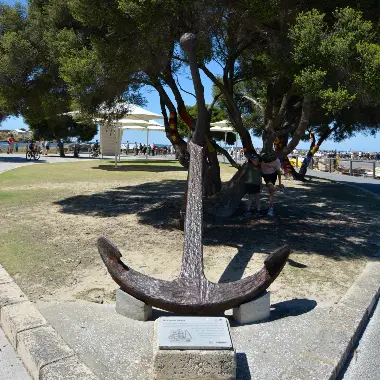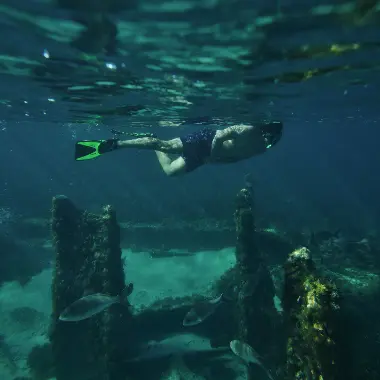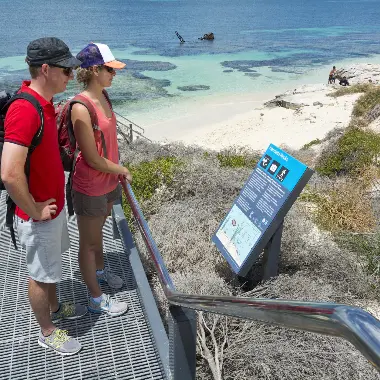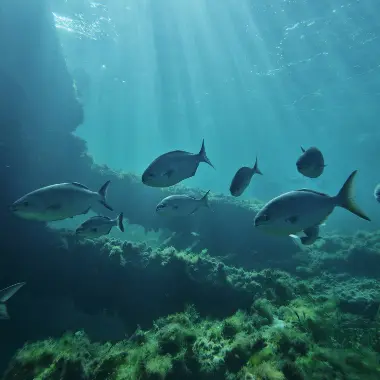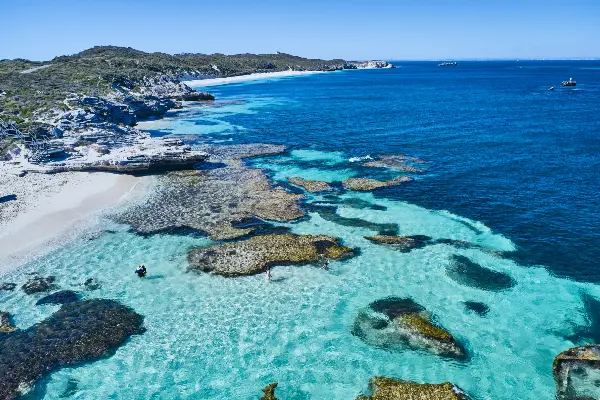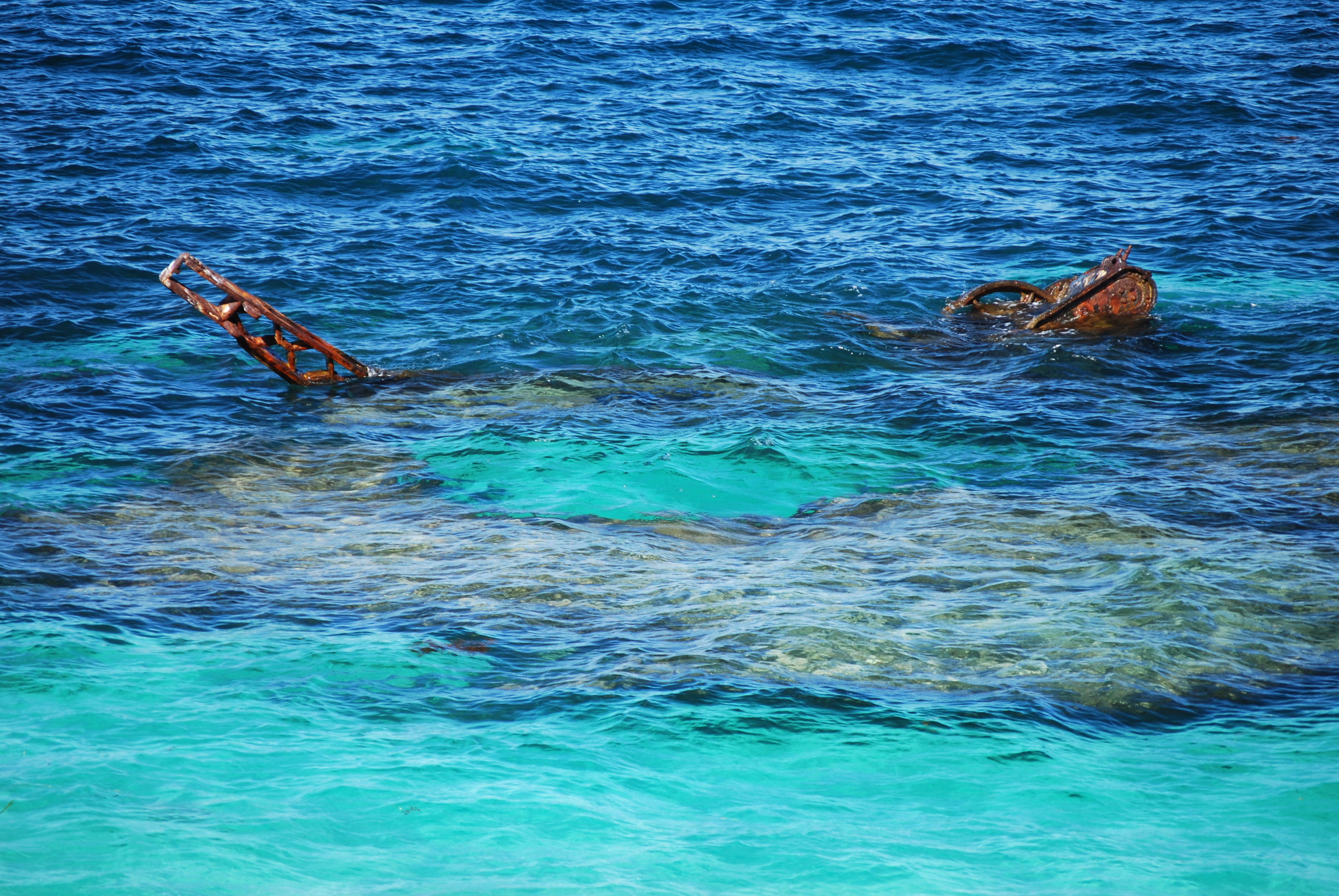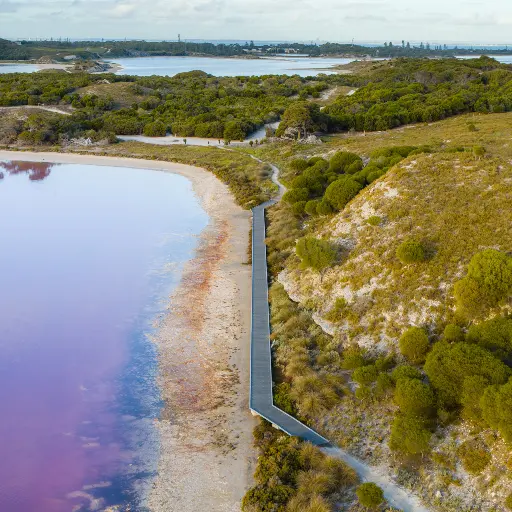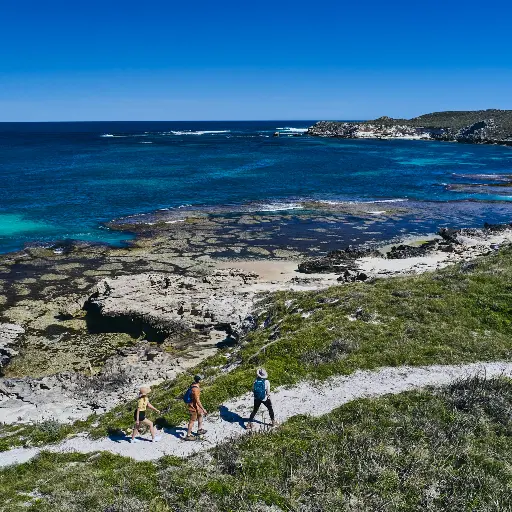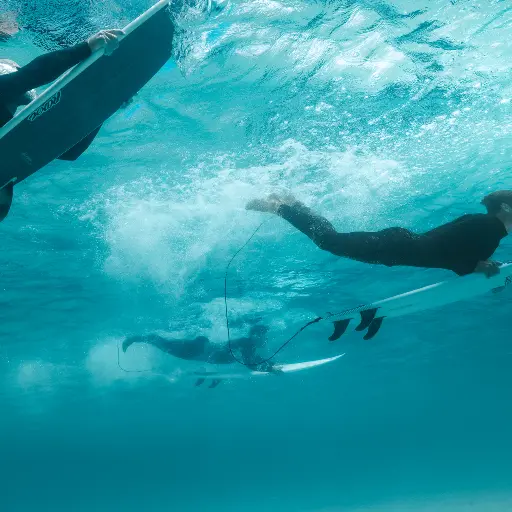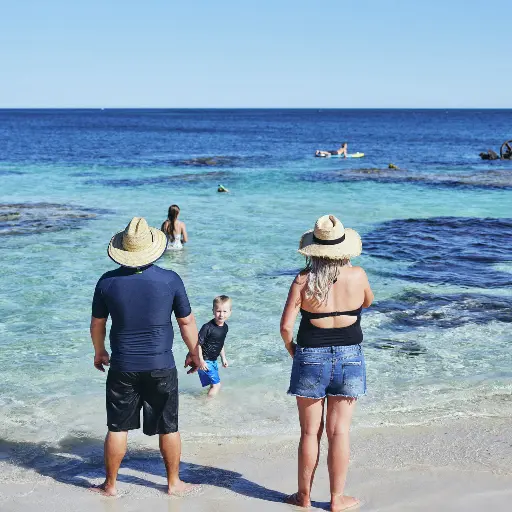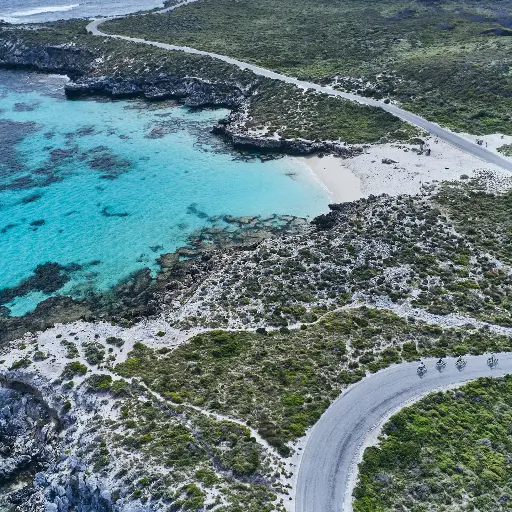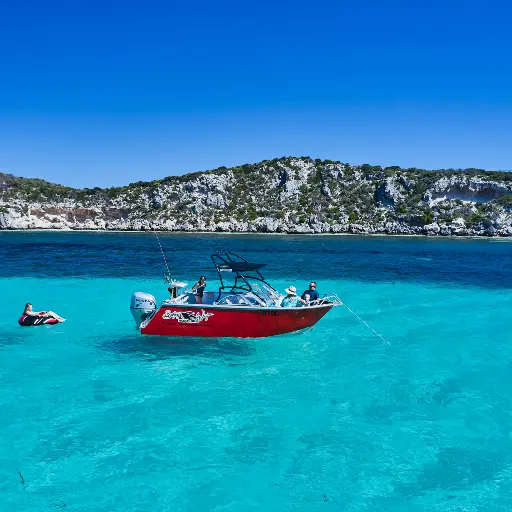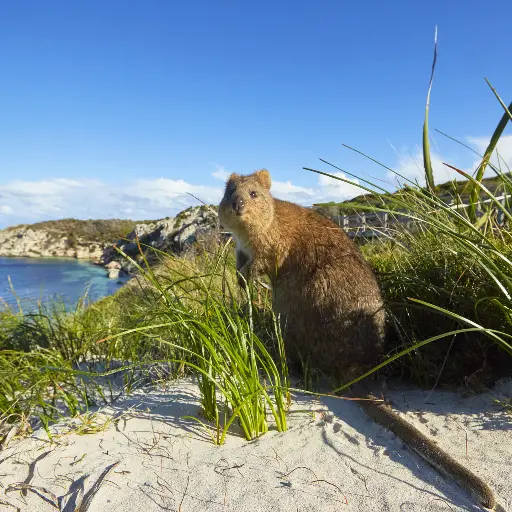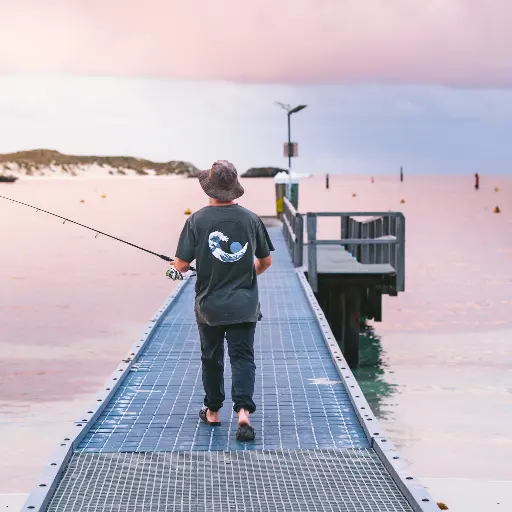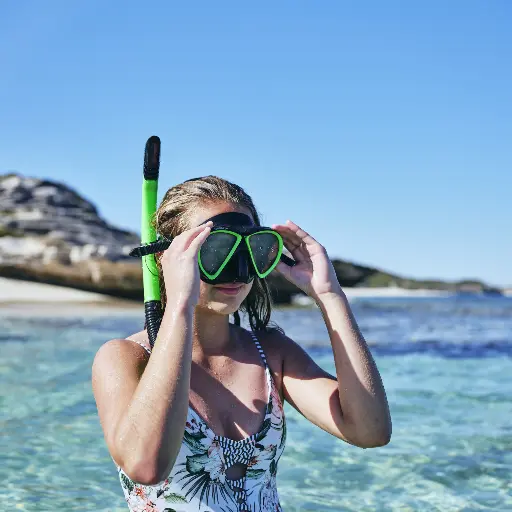A colourful history lies under the waves
Dating back to 1842, the first ship to make the Wadjemup coast its final resting place was Transit. The 124-ton wooden, two-masted schooner struck Duck Rock and sank off the island’s northern coast. Some, like City of York which ran aground in 1899, have taken their place in the naming of Wadjemup. Two wrecks remain a mystery to this day, with unknown ships discovered in both Salmon Bay and City of York Bay.
And it’s not just ancient history. The Japanese tuna boat Kiryo Maru ran aground on its way to Fremantle in 1984, 50 metres offshore at Cathedral Rocks and has remained in place ever since.
To find out more about each of the individual shipwrecks surrounding the island, stop first at the Visitor Centre. Here you’ll find all the information you need to start your maritime trail. Then, take a quick walk to the Wadjemup Museum to learn more.
